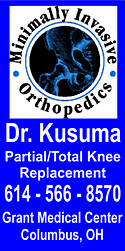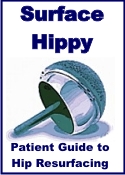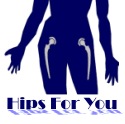Interview with Philipp Lang - The ConforMIS Inc. founder and CEO on custom-made implants, how the company was able to raise $50 million in a difficult investment climate and why ConforMIS is a lot like Dell Computers.
Updated 1/20/2010
READ FULL ARTICLE
Philipp Lang wears a lot of hats. Besides being the founder, president, chairman and CEO of ConforMIS Inc., he's a radiologist and former director of the Musculoskeletal Radiology and Distinguished Weissman Chair at Brigham and Women's Hospital in Boston and associate professor at Harvard Medical School...
...Lang told MassDevice about the genesis of ConforMIS, why its technology is a radical departure from standard orthopedic implant technology, how the company plans to expand the platform beyond knees to other large joints and how it managed to raise $50 million in a Series D round in the worst investment climate in recent memory...
...The key issue with today's standard devices is that they come off the shelf, they come typically in six or seven different sizes and they have to fit any patient, irrespective of their body build — if they're tall or small, if they're large or petite, when they're pre-manufactured you have to fit the patient to the implant. Meaning you have to cut away a lot of tissue, primarily bone, in order to fit the patient with the implant.
We've taken a fundamentally different approach. We take a CT scan or an MRI scan and we use the data to build a virtual model of that patient, a 3D model of that patient. From that model we make a patient-specific implant that simply resurfaces the bone, preserving most of the bone structure and avoiding the really invasive nature of the traditional devices.
The initial concept was tissue preservation and less invasive surgery and what we've seen since, from the perspective of clinical benefit, are multiple benefits: The potential for faster recovery for the patients, faster OR time, et cetera...
...In terms of large joints, knee is the biggest segment. I believe it's actually a little bigger than spine. Hip is the second-largest segment, so very attractive, and shoulder is a small segment today, but very high-growth. In fact, from a growth perspective, it's the highest growth of all. The short answer is these are all very significant markets and we have a significant opportunity because we're coming in with a technology that is so different.
We've pretty much covered all the joints and the clinical applications. That's really the plan here, to build out this pipeline. It's truly platform technology and the plan is really to build this out.
There's another benefit that we sort of learned later in the game. If you think for a moment about just-in-time manufacturing, in the 1980s PCs were generally sitting in a warehouse and you ordered one of those. Dell came up with this concept of "order your custom laptop or your custom PC and we'll ship it in three weeks."
In a sense, we're doing exactly this kind of model in manufacturing orthopedics. We're doing it with the implants, but the other aspect here is that we have novel technology where we replace traditional instrumentation.
Traditional orthopedic implants are implanted using 30 to 40 pieces of instrumentation. These metal instruments are very expensive - they cost between $20,000 and $30,0000. They're multi-use, but the manufacturers have to provide them, typically for free, to the hospitals.
And the hospitals have to store them and autoclave them, so one set of instruments is with the patient in surgery and the other set is outside being cleaned after the last surgery. It's a huge inventory in the hospital. We have replaced this with highly accurate, highly reproducible disposable instruments that are also patient-specific.
Everything is shipped literally in a FedEx box directly to the hospital. You place the box on the OR table, everything is sterile inside. The setup is much quicker than with traditional instrumentation and the hospitals don't have to manage the inventory anymore. They don't have to do the sterilization anymore. It's much easier to handle for the hospitals.




